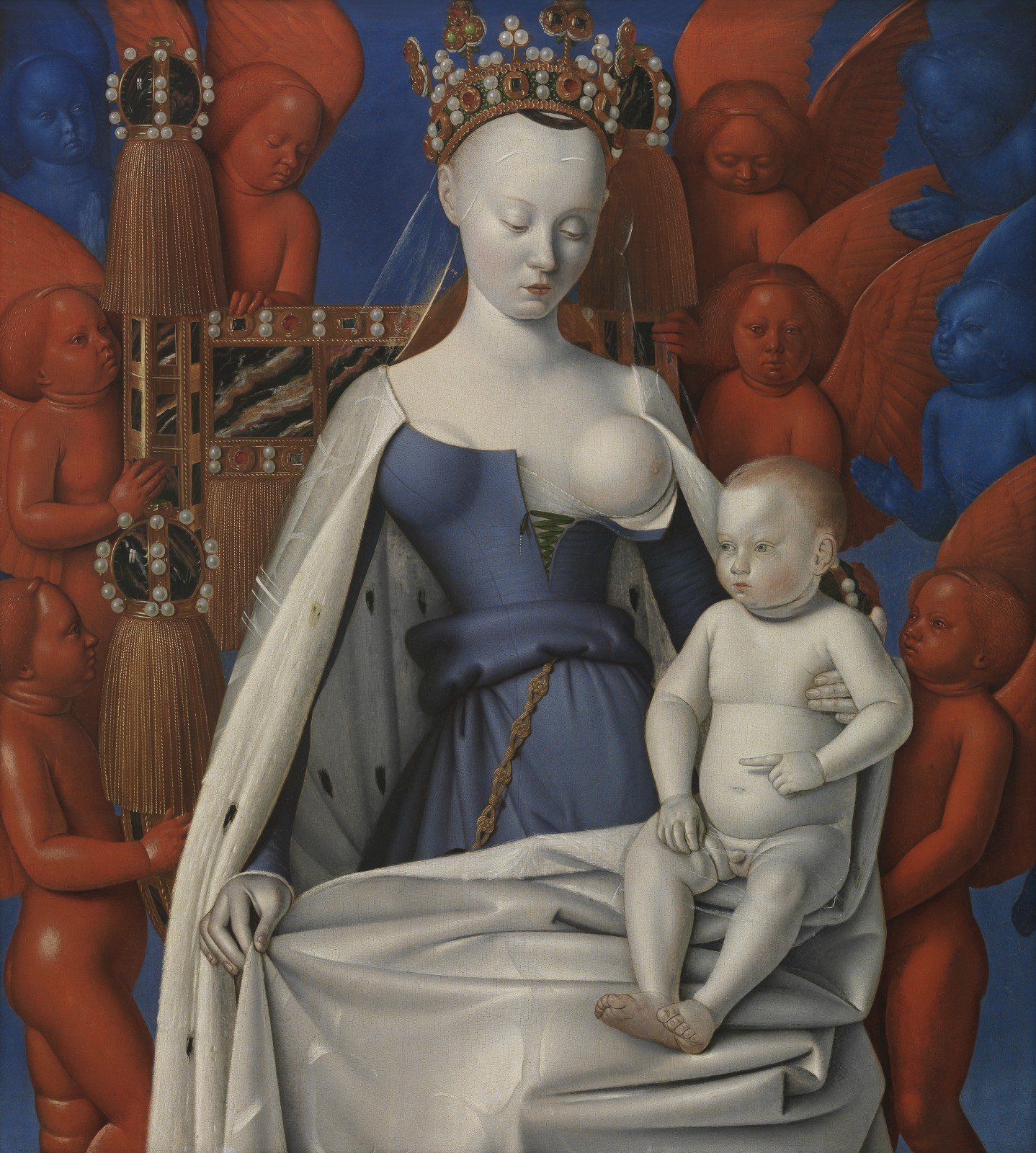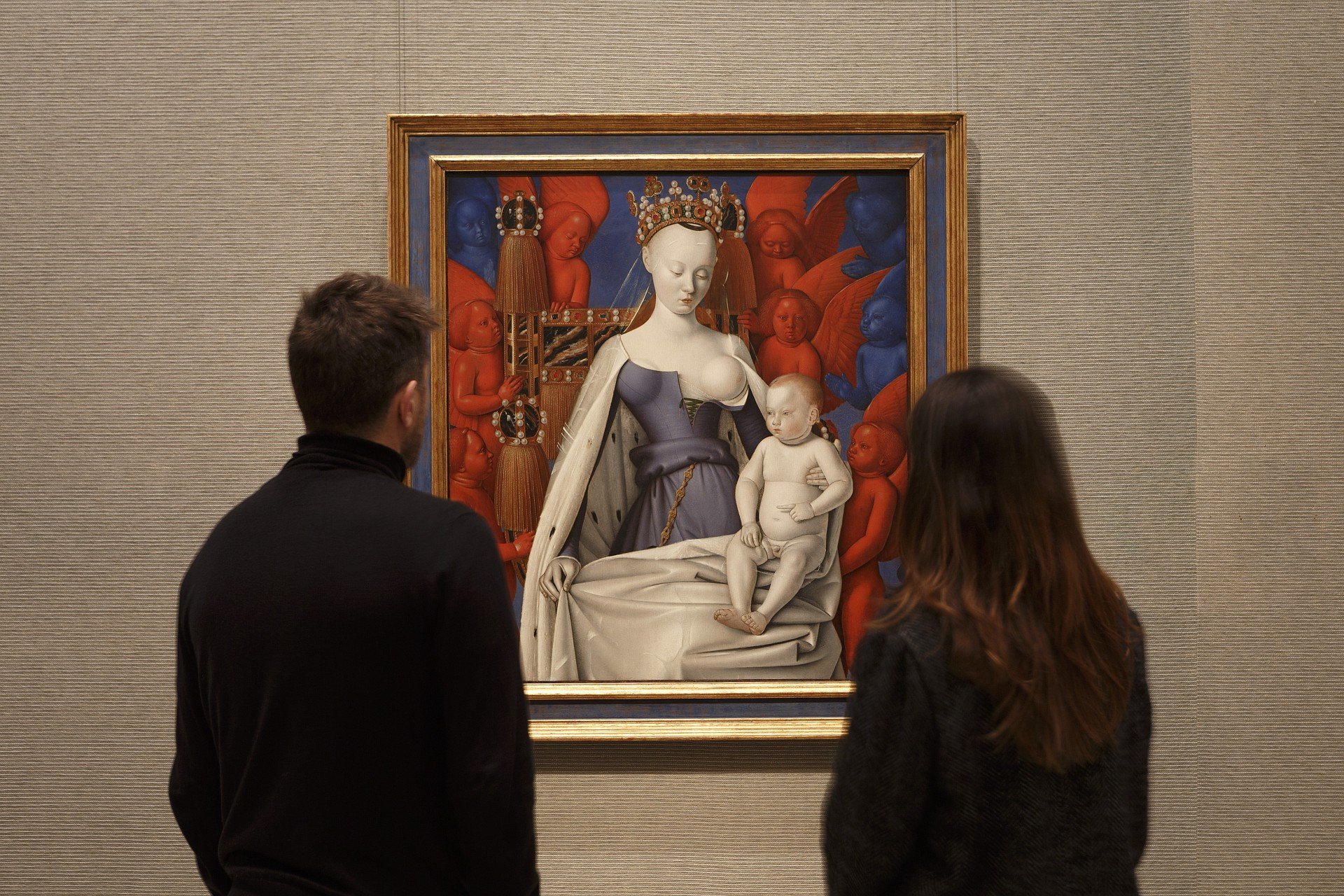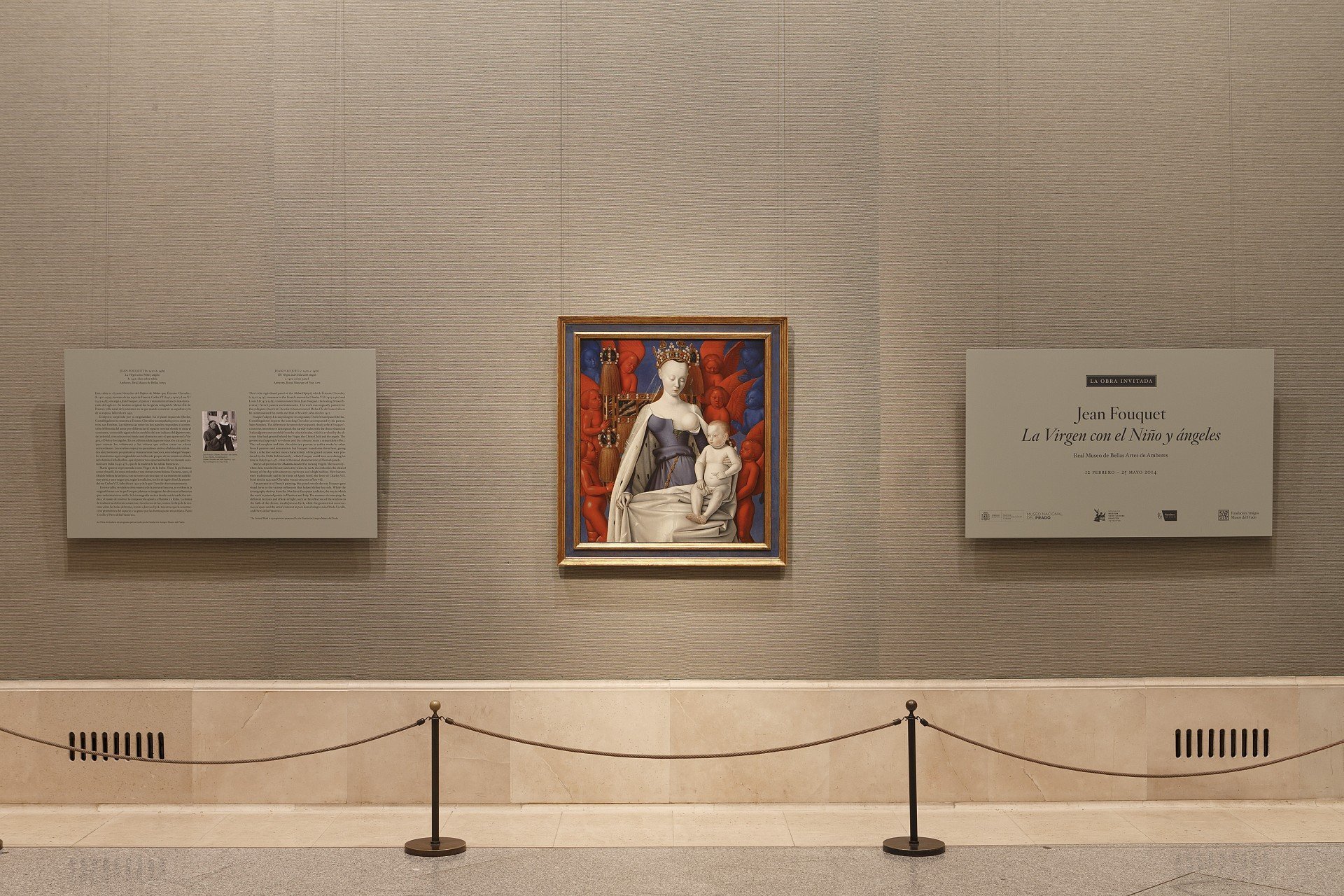Jean Fouquet goes to Madrid with an introduction letter by Paul Cézanne
- Jean Fouquet, Virgin and Child with Angels, 1452-1455 ca. Oil on panel by Jean Fouquet, Antwerp, Koninklijk Museum voor Schone Kunsten (it will be in Madrid, Prado Museum until 25 May)
- Jean Fouquet, Virgin and Child with Angels, 1452-1455 ca. Oil on panel by Jean Fouquet, Antwerp, Koninklijk Museum voor Schone Kunsten (it will be in Madrid, Prado Museum until 25 May) © Museo Nacional del Prad
- Jean Fouquet, Virgin and Child with Angels, 1452-1455 ca. Oil on panel by Jean Fouquet, Antwerp, Koninklijk Museum voor Schone Kunsten (it will be in Madrid, Prado Museum until 25 May) © Museo Nacional del Prado
Generally preserved at the Royal Museum of Fine Arts in Antwerp, the “Virgin and Child with Angels” by French artist Jean Fouquet (Tours, 1420 – 1481) is temporary on display at the Museo Nacional del Prado, Madrid (until 25 May). The work is a famous Renaissance masterpiece, but to the eyes of a contemporary visitor, it could actually look like a fine blend of realism and abstraction.
Besides the relationship between this work and the art of its time, what captured our attention when looking at this painting is a characteristic that a famous letter written by Paul Cézanne four centuries later reveals.
To Emile Bernard
Aix-en-Provence, 15th April, 1904
Dear Monsieur Bernard,
When you get this letter you will very probably already have received a letter coming from Belgium I think, and addressed to you to the rue Boulegon. I am well content with the expression of fine sympathy in art which you sent me in your letter.
May I repeat what I told you here: treat nature by the cylinder, the sphere, the cone, everything in proper perspective so that each side of an object or a plane is directed towards a central point. Lines parallel to the horizon give breadth, that is a section of nature or, if you prefer, of the spectacle that the Pater Omnipotens Aeterne Deus spreads out before our eyes. Lines perpendicular to this horizon give depth. But nature for us men is more depth than surface, whence the need of introducing into our light vibrations, represented by reds and yellows, a sufficient amount of blue to give the impression of air.
I must tell you that I had another look at the study you made in the lower floor of the studio; it is good. You should, I think, only continue in this way. You have the understanding of what must be done and you will soon turn your back on the Gauguins and the van Goghs!
Please thank Madame Bernard for the kind thoughts that she has reserved for the undersigned, a kiss from père Goriot for the children, all my best regards for your dear family.
July 18, 2015



